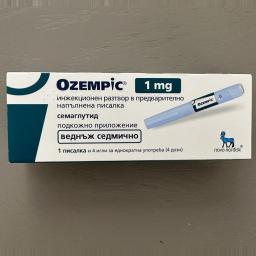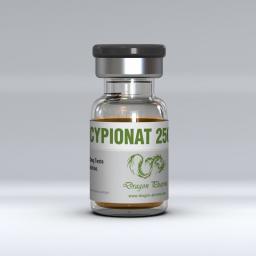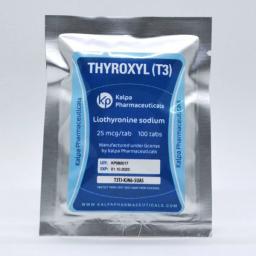About your breasts
The primary function of breasts is to produce milk following the birth of a baby. Each breast is made up of 15 – 20 lobes. These contain the milk producing glands and ducts along which the milk travels to the nipple. Fat and fibrous tissue surrounds these structures and gives the breasts their individual size and shape.
Breasts come in all sorts of shapes and sizes, and one is normally slightly larger than the other. Size, however, has nothing to do with the amount of milk produced.
Blood vessels, lymph glands and nerves are also present in the breasts. Breast tissue is sensitive to touch and can provide sexual pleasure for ourselves and our partners.
Normal breast changes during life
From adolescence to menopause, breast tissue is subject to hormone changes associated with the menstrual cycle, pregnancy and lactation. Benign nodularity or ‘lumpiness’ of the breast is very common. The glandular breast tissue changes throughout the menstrual cycle – becoming more tender and lumpy just prior to a menstrual period and less tender and lumpy after a period.
Women in their forties, that is the peri-menopausal years, often experience increased breast discomfort due to a change in hormone levels which effect breast tissue.
In the post-menopausal years, the glandular tissue of the breast is largely replaced by fatty tissue.
It is important to know your breasts so that you can tell what changes are normal to you.
Common breast problems
Painful breasts (mastalgia)
Often this is linked to the menstrual cycle, with your breasts becoming tender or painful just before your period. This is a normal occurrence caused by fluid retention due to hormonal activity at that time. However, it is wise to have it checked by your doctor who may be able to suggest ways to manage the discomfort.
Both the contraceptive pill and hormone replacement therapy can cause breast discomfort in some women. Sometimes a change in the prescribed type of hormone may be necessary. Ask your doctor for more information.
How can I relieve breast tenderness or pain?
- Try a warm shower, bath or hot water bottle to the breast.
- Some women find an ice pack over the breast more effective than warmth.
- Check that you have a comfortable, supportive bra (e.g. a sports bra).
- Alternatively, some women find it more comfortable without a bra at this time. Try and see which is the most comfortable for you.
- Reduce your intake of caffeine (coffee, tea, cola and chocolate). Also try to reduce your intake of salt and fat.
- You may find relief by taking 100mg of vitamin B6 (pyridoxine) together with vitamin B1 (thiamine) and 1000mg or more of Evening Primrose Oil per day.
- However there is no scientific evidence to support this.
- Relaxation can also be helpful.
If none of the above relieves your breast discomfort, seek advice from your doctor.
Fibroadenomas
These are a common cause of breast lumps and occur more frequently in women between the ages of 15-30.
They may occur occasionally in older women. Each lump consists of glands and fibrous tissue that is benign (non-cancerous). It is painless, feels quite smooth, firm and is mobile in the breast tissue(often called a breast mouse).
Most fibroadenomas are small, however as with all lumps, they should be further assessed by your doctor.
Breast cysts
Cysts can be painful and are caused by a fluid filled sac in breast tissue. Although harmless, they should be checked by your doctor who may aspirate (remove) the fluid from large cysts using a syringe with a fine needle. This procedure may cause some discomfort. The presence of fluid generally confirms the diagnosis, and following aspiration the cyst will usually disappear. Sometimes cysts continue to recur and surgical removal may be necessary. Cysts can vary in size with the menstrual cycle and may disappear spontaneously.
Breast ultrasound is a diagnostic technique that can be used to assess whether a lump is cystic (fluid) or solid.
Benign fibrocystic disease
Some women have a combination of cysts and thickened breast tissue. This increases with age and is a common cause of non-cancerous lumps. This also varies with the menstrual cycle in some women who are sensitive to hormonal changes on breast tissue.
These problems often disappear after menopause, but may persist if the woman is taking hormone therapy.
Nipple discharge
When breastfeeding, it is quite normal for milk to leak from your nipples. This will gradually cease after you have weaned your baby.
If a discharge occurs at any other time, and particularly if the discharge is watery or blood stained, have this checked by your doctor.
Any inversion (pulling in) of the nipple should also be checked. Although often caused by harmless conditions, any new symptoms may indicate a breast cancer.
Inflammation of the breast (mastitis)
This causes redness, heat, lumpiness and pain in the affected breast tissue. Most commonly this is caused by an infection during breastfeeding, but can occur at other times due to blockage and inflammation of the breast duct with infection. Treatment with antibiotics needs to be started immediately to prevent an abscess forming. However, if an abscess forms, a small surgical procedure is required to drain it.
If you have any of the breast problems listed above, a visit to your doctor is recommended.
Mammography
Breast X-ray screening can show breast changes that are too small to be felt by you or during an examination by your doctor.
For women younger than 40 years
Regular screening mammograms are not recommended. In younger women the breast tissue is denser and it is more difficult to differentiate between normal and abnormal breast tissue. An ultrasound may be more helpful.
For women 40-49 years
BreastScreen Australia offers free screening mammograms every two years for women aged 40 years and over. Reminders to attend may not be sent at this age, depending on which state you live in.
For women 50-69 years
As breast cancer is most common in women over 50, BreastScreen offers free screening mammography to women over this age. It is recommended that you have a mammogram every two years. This is the age group in which the benefit of screening mammography has been shown to be the greatest. Reminders are sent to this age group.
For women 70 years or older
BreastScreen Australia offers free screening mammograms every two years for women aged 70 years and older. Whether you attend will depend on your general health, whether you have any other diseases or conditions, and your personal preference.
Breast implants
Women with breast implants should have screening as per above It is not harmful. Discuss this with your doctor before referral.
BreastScreen is for women who have no obvious breast symptoms. If you are concerned about a breast lump or tenderness it is best to see your doctor first.
Healthy lifestyle = healthy breasts
- Eat a healthy diet
- Eat plenty of fruits and vegetables, especially green leafy vegetables and vegetables such as broccoli, cabbage and brussel sprouts
- Eat wholegrain foods
- Reduce animal fats
- Incorporate foods rich in phytoestrogens (plant oestrogens) such as soy, linseeds, grains and vegetables
- Avoid excessive alcohol consumption
- Do not smoke
- Exercise regularly – the Australian National Physical Activity Guidelines recommend that adults accumulate at least 30 minutes of moderate intensity activity (such as walking) most days of the week
- Avoid excess caffeine
- Pay good attention to your breast health, with regular examinations
- Wear a well-fitting bra
If you have any queries or concerns see your doctor.
Top Steroid Products for Sale
Testo-C 500 (2ml)
|
Cypionat 250
|
Thyroxyl T3
|


